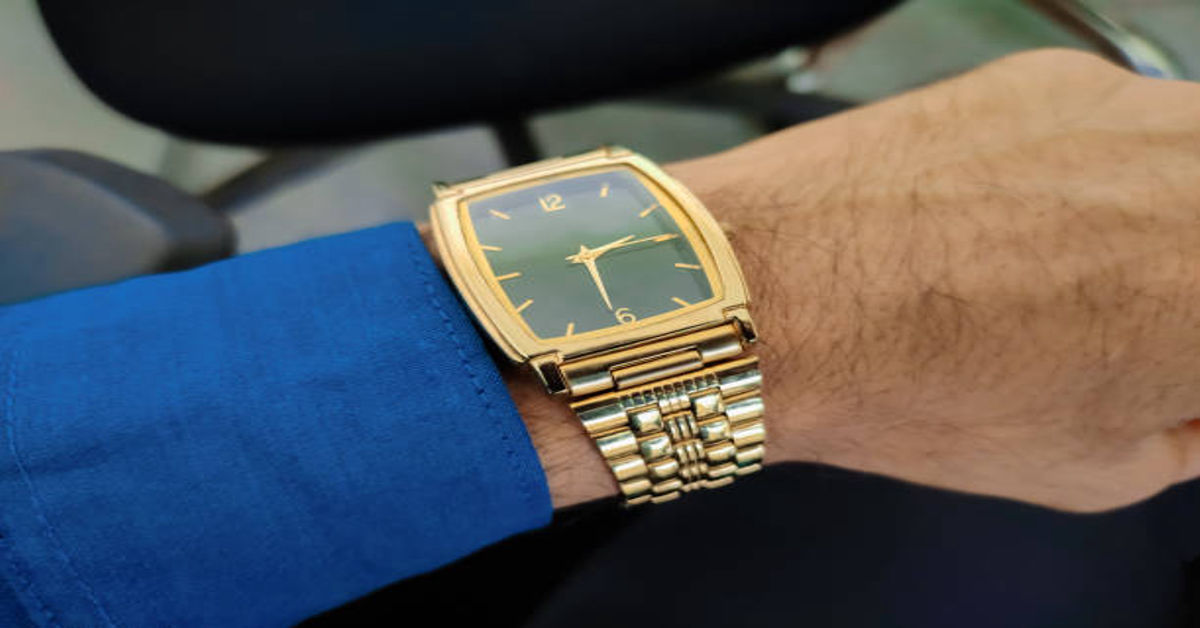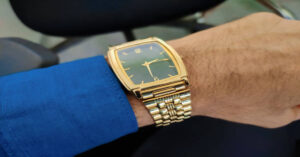Gold watches have been an emblem of sophistication, status, and craftsmanship for centuries. They combine both functionality and luxury, making them highly desirable across generations. Unlike regular watches, gold watches carry intrinsic value due to the precious metal content, which adds to their aesthetic appeal, durability, and investment potential. In this comprehensive guide, we explore the history, types, craftsmanship, buying considerations, maintenance, and investment aspects of gold watches.
History of Gold Watches
The concept of portable timekeeping dates back to the 16th century. Initially, clocks were large and stationary, and personal timepieces were considered luxury items for royalty and the elite. Gold was often used in watchmaking due to its lustrous appeal and resistance to corrosion. The first gold pocket watches appeared in Europe during the 1500s, crafted with intricate designs and engraved cases.
By the 19th century, wristwatches gained popularity, especially among military personnel, due to their practicality. Gold remained a preferred material because it signified wealth and prestige. Over time, gold watches evolved from purely ornamental items into sophisticated instruments combining design, technology, and precision.
Types of Gold Watches
Gold watches can be categorized based on material, movement, and design. Understanding these categories helps buyers make informed choices.
1. Based on Gold Material
| Type of Gold | Description | Pros | Cons |
|---|---|---|---|
| Yellow Gold | Classic gold alloy, natural warm hue | Timeless look, high resale value | Can scratch easily |
| White Gold | Alloyed with nickel, palladium, or silver, often rhodium-plated | Modern, durable, complements diamonds | Needs replating over time |
| Rose Gold | Mixed with copper for pinkish hue | Stylish, trendy, complements all skin tones | Prone to tarnishing with exposure |
| Green Gold | Less common, subtle greenish tint | Unique, rare | Limited availability |
| Gold-Plated | Thin layer of gold over base metal | Affordable, stylish | Wears off over time |
2. Based on Watch Movement
Gold watches can also be classified by their internal mechanism, which affects accuracy, maintenance, and value.
| Movement Type | Description | Pros | Cons |
|---|---|---|---|
| Mechanical | Powered by a mainspring wound manually | Long-lasting, classic appeal | Requires regular winding |
| Automatic | Self-winds via wrist movement | Convenient, prestigious | Needs consistent wear to stay accurate |
| Quartz | Battery-powered | Accurate, low-maintenance | Less prestigious, less value for collectors |
| Hybrid | Combination of quartz and mechanical | Precision + aesthetic appeal | Higher cost, complex servicing |
3. Based on Design
Gold watches are available in a wide range of designs to suit various occasions and personal preferences:
- Dress Watches: Elegant and thin, ideal for formal wear. Often feature minimalistic dials and leather straps.
- Sports Watches: Durable, water-resistant, and often bulkier. Gold sports watches combine luxury with functionality.
- Chronograph Watches: Include stopwatch functions and multiple dials, appealing to enthusiasts and professionals.
- Luxury Watches: High-end brands that incorporate precious stones, advanced complications, and artisanal craftsmanship.
Craftsmanship of Gold Watches
The artistry of gold-watchmaking is intricate. Skilled watchmakers often spend hundreds of hours assembling parts, polishing gold cases, and ensuring precise timekeeping. High-end watches may feature:
- Hand-engraved cases: Intricate designs etched by master craftsmen.
- Complications: Additional features like moon phases, perpetual calendars, and tourbillons.
- Gem Setting: Diamonds or other precious stones set on bezels, dials, or bracelets.
Gold-watch craftsmanship often reflects both technological innovation and artistic expression, which is why certain vintage or limited-edition watches fetch astronomical prices in auctions.
Buying a Gold Watch: Key Considerations
When purchasing a gold-watch, several factors should guide your decision:
1. Gold Purity
Gold is measured in karats, which indicate the proportion of gold in the alloy:
| Karat | Gold Percentage | Notes |
|---|---|---|
| 24K | 99.9% | Purest, very soft |
| 22K | 91.6% | Popular in high-end watches |
| 18K | 75% | Ideal balance of durability and value |
| 14K | 58.3% | Affordable, more durable |
| 10K | 41.7% | Hardiest, least expensive |
Higher karat gold appears richer in color but may be softer and prone to scratches.
2. Brand Reputation
Luxury watch brands like Rolex, Patek Philippe, Audemars Piguet, and Omega are known for exceptional gold watch quality. Brand reputation affects design precision, resale value, and after-sales service.
3. Style and Functionality
Decide whether the watch is for daily use, formal occasions, or as an investment piece. Consider weight, comfort, dial readability, and strap type.
4. Resale and Investment Value
Gold-watches maintain intrinsic value due to their metal content. Limited editions or vintage pieces may appreciate over time. Ensure documentation of authenticity and certificates of gold content.
Maintenance of Gold Watches
Gold watches require careful handling and maintenance to preserve beauty and functionality:
- Cleaning: Use a soft, non-abrasive cloth to wipe the surface. Mild soap and water may be used for straps but avoid soaking.
- Avoid Chemicals: Perfumes, lotions, and cleaning agents can tarnish or corrode gold.
- Servicing: Mechanical and automatic watches need professional servicing every 3–5 years.
- Storage: Keep in padded boxes or watch winders to prevent scratches.
Gold Watch as an Investment
Gold watches are considered both a luxury item and a tangible asset. Investing in gold watches offers multiple advantages:
- Intrinsic Metal Value: Even if the brand depreciates, gold retains intrinsic worth.
- Limited Editions: Rare or limited-release watches often increase in value over time.
- Hedge Against Inflation: Gold historically maintains purchasing power, providing stability.
- Collector Market: Certain vintage watches become highly sought after, fetching significant premiums at auctions.
However, investment in gold watches requires caution. Factors such as brand reputation, condition, documentation, and rarity directly affect potential returns.
Popular Gold Watch Brands
| Brand | Signature Features | Approx. Price Range |
|---|---|---|
| Rolex | Iconic Oyster case, robust design | $10,000 – $75,000+ |
| Patek Philippe | Complicated movements, timeless elegance | $20,000 – $500,000+ |
| Audemars Piguet | Royal Oak design, luxury sports models | $25,000 – $200,000+ |
| Omega | Co-Axial movements, versatile designs | $5,000 – $50,000+ |
| Cartier | Luxury jewelry-watch combinations | $7,000 – $100,000+ |
Common Myths About Gold Watches
- Gold Watches Are Only for the Rich: While luxury brands are expensive, gold-plated and 14K options make gold watches accessible to wider audiences.
- Gold Watches Tarnish Easily: Pure gold does not tarnish; tarnishing occurs in alloys with lower gold content.
- Heavy Watches Are Always Better Quality: Weight is influenced by metal content, not movement precision.
Tips for First-Time Buyers
- Always check gold purity and authenticity certificates.
- Compare multiple brands and designs before purchasing.
- Consider resale value and market demand if buying for investment.
- Choose a style that matches lifestyle and comfort.
- Regularly service the watch to maintain performance and appearance.
Conclusion
Gold watches are timeless symbols of elegance, craftsmanship, and value. From their rich historical roots to modern-day luxury appeal, they are more than just timekeeping devices—they are wearable investments. Choosing the right gold watch involves understanding gold purity, brand reputation, design, and movement type. Proper care ensures longevity, while strategic buying can enhance both personal satisfaction and financial returns. Whether you seek a statement piece, a collector’s item, or a financial asset, a gold watch remains one of the most cherished and enduring symbols of style and wealth.
Frequently Asked Questions (FAQs)
1. Are gold watches worth the investment?
Yes, particularly high-karat gold or limited-edition watches, as they retain intrinsic value and can appreciate over time.
2. How do I maintain a gold watch?
Clean regularly with a soft cloth, avoid chemicals, service mechanical movements every 3–5 years, and store safely.
3. What is the best gold type for watches?
18K gold balances durability and richness, but yellow, white, or rose gold may be chosen based on preference.
4. Can gold watches be worn daily?
Yes, but avoid harsh activities, as gold is softer than stainless steel and can scratch or dent.
5. How can I verify the authenticity of a gold watch?
Check certificates of authenticity, gold purity marks, serial numbers, and purchase from authorized dealers.









